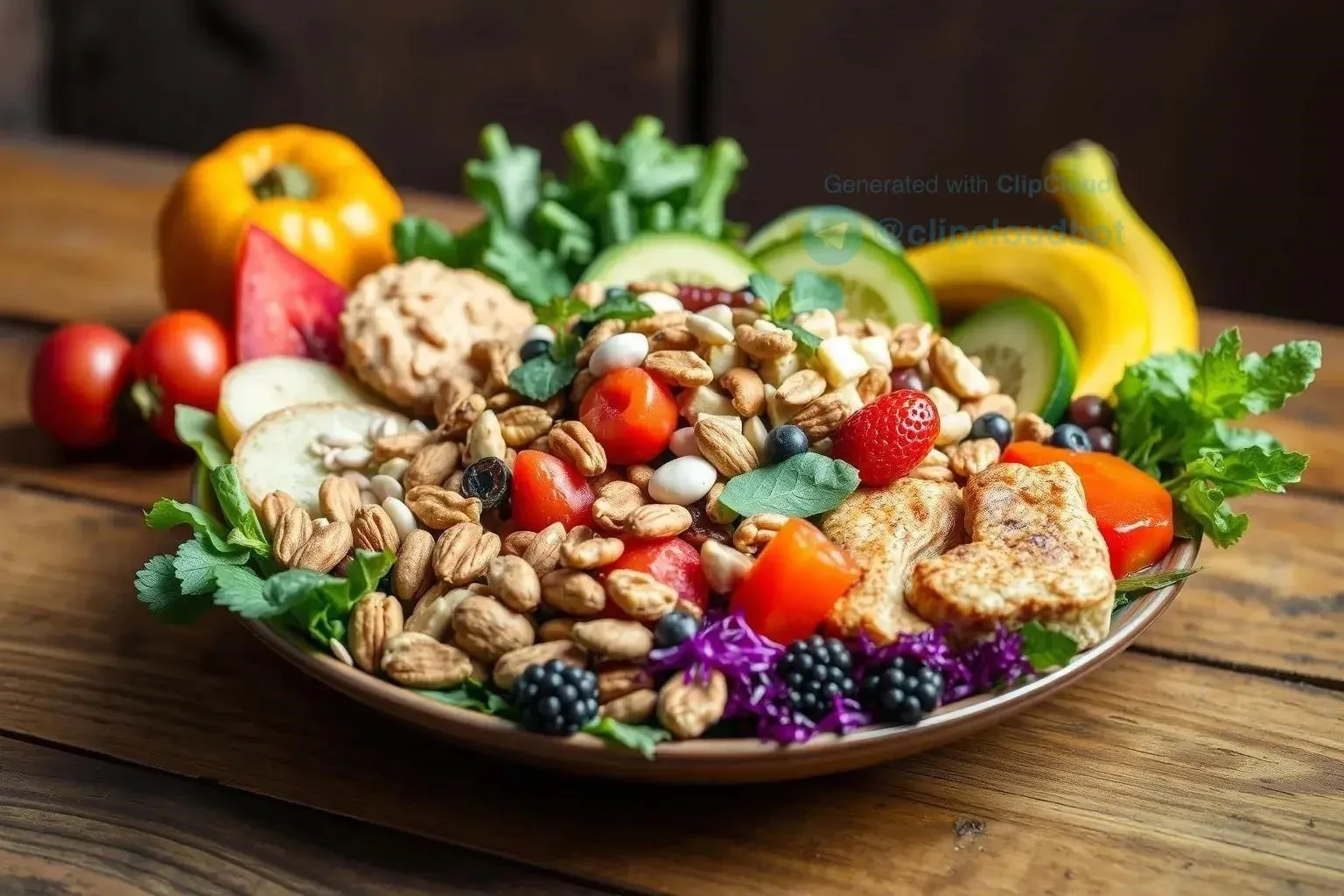Ancestral Wisdom for a Modern Gut: Reconnecting with Our Microbiome
Our ancestors thrived on a diet vastly different from our modern processed fare. Their diverse, whole-food-centric approach fostered a robust and resilient gut microbiome, a complex ecosystem crucial for overall health. This ancestral wisdom holds valuable lessons for us today, offering a roadmap to revitalize our own gut health and reclaim the vibrant inner ecosystem enjoyed by past generations. By understanding the principles of traditional eating, we can unlock the secrets to a thriving gut and experience its profound impact on our well-being.
The Paleo Microbiome: A Blueprint for Gut Health
The “Paleo microbiome” refers to the gut microbial composition that likely existed in our Paleolithic ancestors. While we can’t perfectly reconstruct it, studying hunter-gatherer populations and ancient remains offers valuable insights into a gut ecosystem thriving on a pre-agricultural diet. This ancestral blueprint for gut health emphasizes diversity, resilience, and a symbiotic relationship with the host.
Research suggests that the Paleo microbiome boasted a wider array of bacterial species compared to modern industrialized populations. This rich diversity is associated with improved digestive function, enhanced immunity, and reduced inflammation. A diverse microbiome is better equipped to handle environmental challenges and extract nutrients from a variety of food sources. Conversely, a less diverse gut, often seen in individuals consuming processed diets, is linked to various health issues, including inflammatory bowel disease, obesity, and autoimmune disorders.
Key characteristics of the Paleo microbiome include a higher abundance of beneficial bacteria like Bifidobacteria and Akkermansia muciniphila, along with a lower prevalence of potentially harmful bacteria associated with inflammation. These beneficial microbes play crucial roles in fermenting fiber, producing short-chain fatty acids (SCFAs) that nourish the gut lining, and modulating the immune system.
The Paleo diet, inspired by the eating habits of our ancestors, emphasizes whole, unprocessed foods like fruits, vegetables, lean meats, and nuts, while excluding grains, legumes, and processed foods. While not a perfect replication of ancestral diets, this approach can promote a more diverse and balanced gut microbiome. Studies comparing the gut microbiota of individuals following a Paleo diet to those consuming a typical Western diet have shown increases in beneficial bacteria and improvements in markers of gut health.
Understanding the principles of the Paleo microbiome provides a framework for optimizing our own gut health. By embracing dietary patterns rich in whole foods and minimizing processed foods, we can nurture a diverse and resilient gut ecosystem, paving the way for improved digestion, enhanced immunity, and overall well-being. Further research continues to unravel the complexities of the ancestral gut and its implications for modern health, offering valuable insights for shaping dietary strategies that support a thriving microbiome.
Dietary Diversity and the Gut: A Return to Traditional Eating
Traditional diets, often characterized by a wide variety of whole, unprocessed foods, offer a powerful model for fostering a thriving gut microbiome. Unlike the modern Western diet, often limited in its range of ingredients, traditional eating patterns embrace a diverse array of plant and animal-based foods, providing a rich source of nutrients and prebiotic fibers that fuel a diverse gut ecosystem.
Dietary diversity is crucial for supporting a wide range of beneficial bacteria in the gut. Different bacterial species thrive on different substrates, and a varied diet ensures that a greater number of species are nourished. This, in turn, leads to a more resilient and balanced microbiome, capable of adapting to environmental changes and performing its essential functions effectively. A lack of dietary diversity, on the other hand, can lead to a decline in beneficial bacteria and an overgrowth of potentially harmful species, contributing to gut dysbiosis and related health problems.
Traditional diets often incorporate fermented foods, which are rich in probiotics, beneficial bacteria that directly contribute to a healthy gut microbiome. Foods like sauerkraut, kimchi, yogurt, and kefir introduce beneficial bacteria into the gut, enhancing its diversity and function. These probiotics play a role in strengthening the gut barrier, modulating the immune system, and producing essential nutrients.
Beyond simply the number of different foods consumed, the variety of plant fibers is particularly important for gut health. Traditional diets often include a wide range of fruits, vegetables, nuts, and seeds, each containing unique types of fiber that feed different gut bacteria. This diverse fiber intake promotes a more complex and resilient gut ecosystem. A diet high in processed foods, which are often low in fiber, can lead to a decline in beneficial bacteria and a decrease in overall gut diversity.
By returning to the principles of traditional eating, prioritizing whole, unprocessed foods and embracing dietary diversity, we can cultivate a thriving gut microbiome. This diverse ecosystem plays a crucial role in supporting overall health, from digestion and immunity to mental well-being. Exploring the diverse culinary traditions of different cultures can provide valuable inspiration for incorporating a wider range of nutrient-rich foods into our modern diets and fostering a vibrant and resilient gut microbiome.
The Power of Whole Foods: Nourishing Your Gut from the Inside Out
Whole foods, in their unprocessed and natural state, form the cornerstone of a healthy gut. Unlike refined and processed foods, which are often stripped of their beneficial nutrients and fiber, whole foods provide a rich source of prebiotics, vitamins, minerals, and antioxidants that nourish and support the gut microbiome.
Prebiotic fiber, found abundantly in whole foods like fruits, vegetables, and whole grains, acts as food for beneficial gut bacteria. These bacteria ferment the fiber, producing short-chain fatty acids (SCFAs) like butyrate, which play a critical role in maintaining the integrity of the gut lining, reducing inflammation, and supporting overall gut health. A diet rich in processed foods, often lacking in prebiotic fiber, can starve beneficial bacteria and disrupt the delicate balance of the gut microbiome.
Beyond prebiotic fiber, whole foods are packed with essential vitamins and minerals that contribute to a healthy gut. Vitamins like A, C, and E act as antioxidants, protecting the gut lining from damage caused by free radicals. Minerals like zinc and magnesium play a role in maintaining the integrity of the gut barrier and supporting immune function within the gut.
Polyphenols, another beneficial compound found in many whole foods, especially fruits and vegetables, also contribute to gut health. These plant compounds have prebiotic properties, promoting the growth of beneficial bacteria. They also possess antioxidant and anti-inflammatory properties, further supporting a healthy gut environment.
By prioritizing whole foods in our diet, we provide the essential nutrients and prebiotic fiber needed to nourish a thriving gut microbiome. This, in turn, supports optimal digestion, strengthens the immune system, and contributes to overall well-being. Minimizing processed foods, which often contain additives and artificial ingredients that can disrupt the gut, is equally crucial. Embracing a diet rich in whole foods is a powerful step towards cultivating a healthy and resilient gut ecosystem from the inside out.
Rewilding Your Gut Bacteria: Embracing the Benefits of Traditional Eating
“Rewilding” your gut involves restoring the diversity and balance of your gut microbiome, drawing inspiration from the robust gut ecosystems of our ancestors. Traditional eating patterns, emphasizing whole, unprocessed foods and a wide variety of plant fibers, offer a powerful approach to achieving this “rewilding” effect.
Modern diets, often dominated by processed foods, can lead to a depleted and less diverse gut microbiome. This reduced diversity is associated with increased susceptibility to inflammation, digestive issues, and other health problems. By adopting dietary practices more aligned with traditional eating, we can reintroduce beneficial bacteria and foster a more resilient and balanced gut ecosystem.
A key aspect of rewilding the gut involves increasing the intake of diverse plant fibers. Traditional diets often include a wide range of fruits, vegetables, nuts, seeds, and whole grains, each providing unique types of fiber that nourish different bacterial species. This diverse fiber intake promotes a more complex and balanced microbiome.
Incorporating fermented foods, another hallmark of many traditional diets, can further enhance the rewilding process. Fermented foods like sauerkraut, kimchi, and kefir are rich in beneficial bacteria that can directly contribute to gut diversity. These probiotics can help restore balance to a depleted microbiome and enhance its overall function.
Beyond dietary changes, lifestyle factors also play a role in gut health. Traditional lifestyles often involved higher levels of physical activity, lower stress levels, and greater connection with nature, all of which can positively influence the gut microbiome. Incorporating these lifestyle practices alongside dietary changes can further support the rewilding process and contribute to a more resilient and thriving gut ecosystem. By embracing the wisdom of traditional eating and lifestyles, we can rewild our gut bacteria and unlock the numerous benefits of a diverse and balanced microbiome, promoting overall health and well-being.






